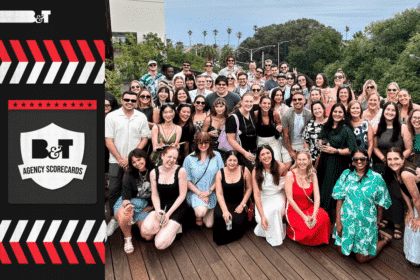Mutinex is one of the hottest startups in the marketing world at the moment with its GrowthOS and DataOS platforms offering brands, agencies and marketers a chance at true dollar-in, dollar-out marketing spend assessment.
While its GrowthOS product has been around for a little while, its DataOS product is entirely new. Launched at the end of last month, DataOS gives marketers the ability to quickly upload and organise marketing performance and audience data, making it easier and quicker to analyse through its GrowthOS platform.
“They’ll sit side-by-side,” Mutinex’s co-founder and chief executive, Henry Innis, told B&T.
“The fundamental problem to address in the market mix is poor quality signals.”
The reason for that poor signal quality is a lack of specialisation.
“If you’re a bespoke modelling company or a market research company, you have a bunch of consultants running around doing this work and charging by the hour, which costs a fortune. On the other side, you have SaaS companies that effectively just build API connections that deliver low-quality data models. Both are fundamentally bad outcomes for clients.”
Agencies, marketing teams and, most importantly, investors have been quick to seize upon the opportunity presented by Mutinex’s platforms. In April last year, Dentsu was announced as its exclusive agency partner. In October, it raised $AU9.5 million, bringing its valuation to $AU75 million. In February, it announced another $AU5 million in seed extension funding.
That growth, Innis believes has come from spotting a gap in the market that no other company “has a business model incentive to do so”.
He pointed to market research firms, many of whom are owned by private equity, saying they have “no incentive” to reduce their revenue. However, he added that there was “no maturity” in MMM vendors and software companies, meaning that they miss marketers’ need for solid signals.
“My position on this is quite simple. Most companies want to do MMM but when they embark on that process, getting quality data is hard. If you make that process easy, you open up the category for so many more businesses to growth model, even if they don’t have their house in order on data.
“If that happens, I fundamentally believe that we will make the industry more effective and that’s a good thing to build credibility in the industry.”
Mutinex is starting to make waves outside Australia, too, expanding into the US where Innis said that there was “a lot of demand” from the granularity of its product and the accuracy of its scenario forecaster has cut through.
“Combine that with our data management platform, we’ve found a nice in the market that will continue to cut through,” he added.
Seasoned adlander John Sintras has been leading its foray into the US since November. As Innis explained, hiring smart, experienced heads is all part of the plan for Mutinex.
“John is an incisive client leader who understands instinctively how to motivate a process, how to bring people together and drive people along a process. He has relentlessly calm high standards,” said Innis.
“I always think that if you surround yourself with the smartest and best people, you will go far. Steel sharpens steel. That’s where I like to focus all of my time.”
Innis, of course, is equally sharp — that’s evident in the product that he and fellow co-founder and chief operating officer Matt Farrugia have built. But growing the business at pace has not been entirely straightforward for Innis on a professional level.
“I would rate myself as a developing leader and probably a three out of 10 in terms of my developmental proficiency,” he said.
B&T did not prompt Innis to rate himself out of 10, either.
“There has been a lot to learn with a lot of humbling moments, stuff ups as well with people management. I’m not always the easiest person to work for, there’s no doubt about that. Leadership is hard but it’s rewarding when you’re generating a significant amount of impact. I’ll learn more about how to lead, when to push when to pull. Situational leadership is something that a mentor of mine has been talking to me about a lot.”
Boiling it down, Innis said that good leadership revolved around “strategic clarity” and the ability to communicate that clear strategy. However, he added that there were times when leaders needed to “get into the trenches” with staff to overcome technical problems.
“We’re trying to build one of the next great Australian companies and that’s hard. It’s a high bar to build a company like this. Naturally, I’m going to have to face a lot of growth as a leader as a result. Humans are imperfect, I’m imperfect as a leader. I don’t shy away from that,” he said.
Growing a business will naturally result in some growing pains. But, with the team that Innis is assembling, he will have plenty of experience to fall back on.








